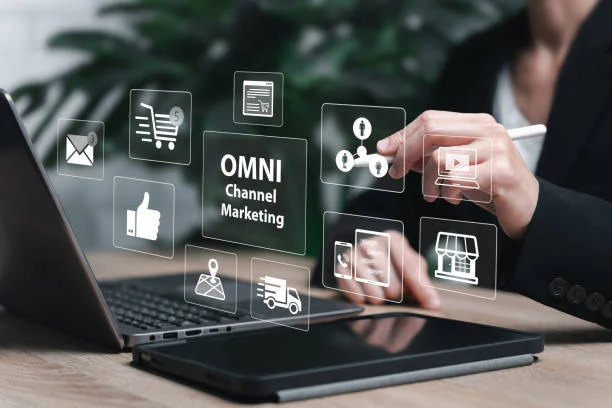Brands of today have the benefit of reaching their audience through multiple channels. Email, web push, mobile notifications, and SMS campaigns are some of them. However, when these channels function separately from one another, companies may face many challenges. These include overlapping messages, delivering irrelevant offers, and lagging in fulfilling customer demands. This results in a disjointed, unimpressive, and overall poor interaction for the customer of Omnichannel Marketing Strategy.
Companies need to link these isolated channels and take an omnichannel approach to improve engagement. They can make use of an omnichannel marketing platform that merges and aligns customer data, coordinates every channel and interaction, and builds connected journeys. This omnichannel approach can help businesses deliver consistent, connected experiences and campaigns that customers engage with.
Need for an Omnichannel Marketing Strategy
An omnichannel approach lets customers get a similar experience irrespective of the channel that they use to engage with brands. By building connected customer experiences that meet customers where they spend time, companies can gather broad insights into their behavior and reassign their efforts for higher efficiency and improved outcomes.
Customers expect brands to reach them where they’re active—on their chosen platforms and at the right moment. When they receive that kind of attention, they’re more likely to respond and convert. This is a key reason why using an omnichannel marketing software is essential.
The connectivity that an omnichannel marketing platform offers cuts down friction during key steps of conversion. It also provides a better view of the customer experience from start to finish, showing where a brand can improve its service.
Don’t stop here—take a look at what else we’ve got for you!
6 Steps in Creating an Omnichannel Marketing Strategy
An omnichannel marketing platform can make it easier for businesses of all sizes and any industry to deliver a consistent experience across channels. Here’s a step-by-step guide to building an omnichannel marketing strategy using a platform.
1. Identifying Customer’s Preferred Channels
Businesses must examine the channels and devices that their customers use most when interacting with their brand. They can use an omnichannel marketing platform to study how users engage with the brand and assess how current, multi-channel customer behaviors are influencing the paths toward conversion points. This includes identifying which channels customers choose and the reason behind it.
This will help to recognize which platforms the audience favors, so they can improve their omnichannel plan and focus on the channels they engage with most.
2. Building Buyer Personas
Engaging customers requires a deep understanding of their behavior and preferences. However, for new customers, companies will not have historical data to analyze and identify their preferences. Creating a buyer persona that reflects age, behavior, and purchasing styles can help in this aspect. It enables companies to connect effectively with their customers and shape custom campaigns using omnichannel marketing software that capture their interest.
Businesses need to think deeply about what matters to each persona: Who are they? What are they looking for in a product or service? What annoys them the most? Why do they purchase from you?
This will help create campaigns that highlight a business’s advantage and the unique value it provides.
3. Audience Segmentation
While buyer personas help understand the ideal customer, segmenting existing audiences based on shared traits can lead to better personalization and live interactions.
Customers can be grouped by their location, online activity, or sorted by loyalty or interaction levels with a brand. Using omnichannel marketing platform, brands can fine-tune channel choices and sharpen campaign messaging at scale to specific groups.
4. Mapping Buying Journey
When businesses know who their customers are and where they engage the most, they can create personalized customer journeys based on the users’ habits and preferences. To truly grasp how audiences interact and meet them where they are, creating detailed buying journey at every possible interaction point—both digital and physical—along with every type of touchpoint and sequence they could take.
This lets companies to provide a smooth buying journey, reduce obstacles, and raise both engagement and retention.
5. Connect all platforms and systems
Mapping customer journey enables companies to know how their audience moves across platforms and devices. They can apply these insights to an omnichannel marketing software to ensure smooth connections between the points customers enter and exit across physical and digital channels.
From reading about a brand online to walking into a store to completing a purchase on the mobile app—no matter the sequence, organizations must make sure the experience stays consistent throughout.
6. Focus on Customer Support
Many brands fail in delivering an omnichannel experience because of their weak support system. Help services are a vital part of any strong omnichannel approach. No matter the platform, customers must get quality help when they reach out to a brand. Reliability and clear access to assistance with straightforward steps play a big role in shaping the impression of a brand.
Bottom Line
Omnichannel marketing platforms can help businesses to attract new customers and retain existing once. When brands meet people where they are, speaking to them with relevant messaging and through their chosen channels, they can increase the chances of conversion.
An omnichannel marketing software helps brands apply important tools like high-level personalization and audience targeting at scale while still measuring performance to push goals forward. Omnichannel methods uncover valuable, usable insights which brands can use to continuously refine their marketing approach and make customers feel valued, improving their satisfaction, and ensuring loyalty.
Want more insights like this? Head over to Management Works Media and start exploring.






